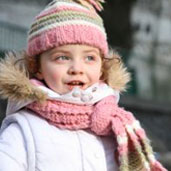Ostankino Estate
20.06.2014 19:09 Просмотров: 436
 Ostankino Palace is a former summer residence and private opera theater of Sheremetev family, originally situated several kilometres to the north from Moscow but now a part of the North-Eastern Administrative Okrug of Moscow. Extant historical Ostankino includes the main wooden palace, built in 1792-1798 around a theater hall, with adjacent Egyptian and Italian pavilions, a 17th-century Trinity church, and fragments of the old Ostankino park with a replica of Milovzor folly.
Ostankino Palace is a former summer residence and private opera theater of Sheremetev family, originally situated several kilometres to the north from Moscow but now a part of the North-Eastern Administrative Okrug of Moscow. Extant historical Ostankino includes the main wooden palace, built in 1792-1798 around a theater hall, with adjacent Egyptian and Italian pavilions, a 17th-century Trinity church, and fragments of the old Ostankino park with a replica of Milovzor folly.
Ostankino Palace is third-largest wooden building in the world[1] after Tōdai-ji and Old Government Buildings.
First documental evidence of Ostankino - then known as Ostashkovo - emerged in the middle of 16th century, when Tsar Ivan IV of Russia granted these lands to the hold of Alexey Satin, relative of statesman Alexey Adashev. Satin, however, was executed by Ivan in 1560, and the lands passed to someone Horn, a German mercenary, and in 1585 - to notable diak (statesman) Vasily Schelkalov. Under Schelkalov, the unpopulated lands of Ostashkovo developed into a relatively prosperous manor estate with ponds and cedar park. This manor was destroyed by plunder and fire in the Time of Troubles.
In 1787 Nikolai Sheremetev inherited Ostankino upon the death of his father. Well-educated and extremely wealthy, Nikolai Sheremetev was a patron of theater; his extravagant shows earned him nickname Croesus Junior. In the three following years Sheremetev established house theaters in Kuskovo, Kitai-gorod and Markovo. In 1790 he held an architectural contest for a Palace of Arts in Moscow, but eventually preferred to build it in the country, far from city life. Building a new large theater in Kuskovo would have ruined an already completed ensemble, so in the same 1790 Sheremetev finally chose Ostankino.
Sheremetev initially hired someone Casier (Russian: Казье), a self-proclaimed architect employed by Golitsyn family. This project did not materialize; by 1792, Sheremetev built only a two-story wooden theater hall, apparently discarding Casier's plans.
Then, as Sheremetev recruited services of influential contemporary architects (most notably Francesco Camporesi, see Attribution dispute section), work accelerated and the wooden palace was structurally in its present shape, including pavilion wings, by the end of 1793. Contemporary witnesses reported that Sheremetev was so confident in perfection of his palace that he set up an unprecedented veil of secrecy around construction site: the manor was closed to any visitors, covered with shrouds, architects worked in parallel unaware of each other's progress.
Interior works took another six years. In 1793 Sheremetev ordered redesign of theater so that the main hall and stage could be transformed at will to a single ballroom. In 1794 he redecorated already finished Italian pavilion and expanded the galleries between pavilions and the palace. Each round of decoration required stripping of earlier finishes. In the same 1794 Sheremetev realized that the palace fails to accommodate all the guests and ordered another round of expansion and remodelling. Giacomo Quarenghi and Pyotr Argunov presented their ambitious expansion drafts, however, actual expansion carried out by (most likely) Ivan Starov was quite modest and did not change palace exterior - at least, its southern facade. Subsequent expansion concentrated on the sprawling side wings, most notably the Italian rotunda (1796) that would become a study of Alexander II sixty years later.
- Address: 1st Ostankinskaya st., 5.
- Telephone: +7 (495) 683-46-45
- How to get: Metro Station "VDNH", "Alekseevskaya" Trolleybus 9, 37
- Open hours: Fron May till October the Estate is open only for organized tour groups. The park is open till 20:00.
- Ticket price: 350 rubles, tacking photos - 100. Duration of the tour - half an hour.
- Website: www.ostankino-museum.ru
Author of the photos: alexmos_2011
Sourse: http://en.wikipedia.org/wiki/Ostankino_Palace






























See other:
 Ostankino Palace
Ostankino Palace is a former summer residence and private opera theater of Sheremetev family, originally situated several kilometres to the north from Moscow but now a ... Подробнее...
Ostankino Palace
Ostankino Palace is a former summer residence and private opera theater of Sheremetev family, originally situated several kilometres to the north from Moscow but now a ... Подробнее...  Muranovo Estate
One sunny day of September we decided to visit the Feodor Tyutchev State Museum Muranovo. It has a special place among other museums in Moscow region. The estate is als... Подробнее...
Muranovo Estate
One sunny day of September we decided to visit the Feodor Tyutchev State Museum Muranovo. It has a special place among other museums in Moscow region. The estate is als... Подробнее...  Brattsevo estate
Brattsevo estate was first mentioned during the times of Ivan the Terrible. The territory was in turn owned by Zubovs, Khitrovo, Naryshkins, Stroganovs, Rimsky-Korsakov... Подробнее...
Brattsevo estate
Brattsevo estate was first mentioned during the times of Ivan the Terrible. The territory was in turn owned by Zubovs, Khitrovo, Naryshkins, Stroganovs, Rimsky-Korsakov... Подробнее...  Arkhangelskoye Estate
The country estate "Arkhangelskoye" is located 20 km from Moscow in Krasnogorsky District. The territory of the estate is huge, and a beautiful park takes the main part... Подробнее...
Arkhangelskoye Estate
The country estate "Arkhangelskoye" is located 20 km from Moscow in Krasnogorsky District. The territory of the estate is huge, and a beautiful park takes the main part... Подробнее...  Ostankino Estate
Ostankino Palace is a former summer residence and private opera theater of Sheremetev family, originally situated several kilometres to the north from Moscow but now a ... Подробнее...
Ostankino Estate
Ostankino Palace is a former summer residence and private opera theater of Sheremetev family, originally situated several kilometres to the north from Moscow but now a ... Подробнее... Our Friends
Contact us
E-mail: admin@anothercity.ru








